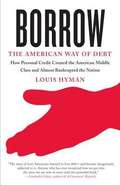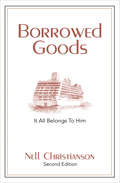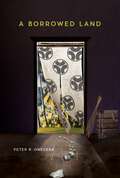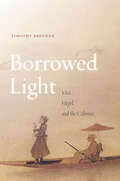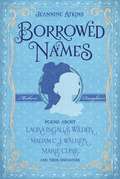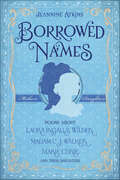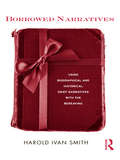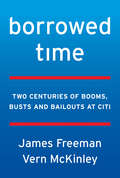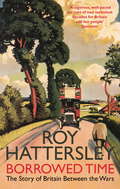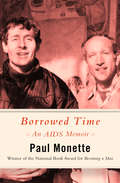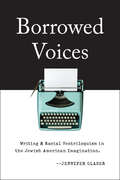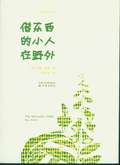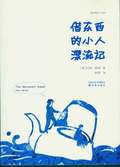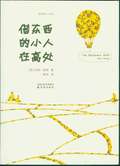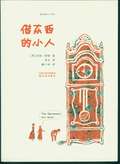- Table View
- List View
Borriquitos con chándal: Escritos sobre la educación, la enseñanza y el deporte
by Rafael Sánchez FerlosioUna selección de los mejores artículos de Rafael Sánchez Ferlosio sobre la enseñanza. «Es el mejor Cervantes que se ha dado en España».Juan Goytisolo Decía Ferlosio que las cuestiones por las que se interesaba apenas pasaban de «seis o siete», y añadía que, «con el paso de los años y de las recurrencias», algunas acaban abriendo tuberías de comunicación con las otras, por lo que no era raro que esas «seis o siete» cuestiones se fueran «fundiendo y reduciendo». Sin duda, una de ellas es la cuestión de la enseñanza, es decir, la forma en que cabe transmitir el conocimiento, los modos en que éste es adquirido. De esa centralidad ofrecen un testimonio los textos reunidos en el presente volumen, que comprenden un arco temporal de cuatro décadas, las que van de 1972 a 2012.Las ideas fuertes de Ferlosio en lo relativo a la enseñanza parten de su convicción de que «toda educación es constrictiva», por cuanto entraña «un proceso de apropiación social del niño por el medio». En lugar de eso, lo que corresponde más bien es instruir al niño, es decir, brindarle el acceso a unos conocimientos que, «exentos de toda clase de orientaciones prácticas y juicios de valor [...] no pueden ni deben, de ninguna manera, dejarse dirigir por ninguna finalidad educativa». Pues de lo que se trata, o de lo que debería tratarse, al menos en la escuela, es de transmitir conocimientos, y los conocimientos, en sí mismos son radicalmente impersonales. De ahí que lo más consecuente sea que en el proceso de la enseñanza prime el «principio de impersonalidad», principio que debería regir el lugar público en que los conocimientos se imparten y que debería revestir la relación de los alumnos con sus profesores.De uno a otro de los textos aquí compilados, escritos a veces con muchos años de distancia, es fácil apreciar motivos recurrentes, argumentos y observaciones a los que Ferlosio vuelve para connotarlos cada vez de manera distinta, y que terminan por conformar una urdimbre coherente y compacta, que da cuenta de la forma tan lenta y progresiva en que madura sus ideas, imbricándolas unas con otras. La vigencia que mantienen todas las piezas reunidas es indicativa de la profundidad de sus planteamientos, que siguen incidiendo con toda pertinencia en cuestiones de permanente actualidad. Sobre el autor y su obra se ha dicho:«Si se me pidiese un nombre, uno solo, entre los surgidos en la literatura española de posguerra, con categoría suficiente para afrontar la inmortalidad literaria, yo daría, sin vacilar, el de Rafael Sánchez Ferlosio».Miguel Delibes «Gramático anfetamínico, grafómano patológico, plumífero hipotáctico —demasiadas esdrújulas para un hombre tan poco dado al perifollo—, Ferlosio es, en definitiva, lo que se dice un clásico en vida».Ernesto Baltar, Jotdown«Los pecios de Ferlosio son... ferlosianos. Están escritos como si partiera de cero, del vacío... No sé si alguna vez fueran restos del naufragio, pero ya tienen categoría de género en sí mismos».Gonzalo Hidalgo Bayal «Entre los autores de mi generación o de las anteriores, sólo me interesa Ferlosio, que es el mejor escritor español».Juan Benet«Si la vida intelectual española ha tenido un clérigo auténtico, sin duda ha sido el maestro Rafael Sánchez Ferlosio».Jordi Amat, La Vanguardia
Borrow
by Louis HymanIn this lively history of consumer debt in America, economic historian Louis Hyman demonstrates that today's problems are not as new as we think. Borrow examines how the rise of consumer borrowing--virtually unknown before the twentieth century--has altered our culture and economy. Starting in the years before the Great Depression, increased access to money raised living standards but also introduced unforeseen risks. As lending grew more and more profitable, it displaced funds available for business borrowing, setting our economy on an unsustainable course. Told through the vivid stories of individuals and institutions affected by these changes, Borrow charts the collision of commerce and culture in twentieth-century America, giving an historical perspective on what is new--and what is not--in today's economic turmoil.
Borrowed Babies: Apprenticing for Motherhood
by Jill ChristmanUntil the 1960s, infants were plucked from orphanages and maternity wards and used as &“practice babies&” in college home economics department across the country. Award-winning writer Jill Christman was determined to find out what happened to them. Along the way, five months pregnant herself, with her hormones (and anxiety) raging, she also hoped to discover what it means to be a mother.
Borrowed Finery: A Memoir
by Paula FoxAn exotic, heartbreaking memoir that should finally earn Paula Fox, a distinguished novelist and children's book writer, the audience she has for decades deserved Paula Fox has long been acclaimed as one of America's most brilliant fiction writers. Borrowed Finery, her first book in nearly a decade, is an astonishing memoir of her highly unusual beginnings. Born in the twenties to nomadic, bohemian parents, Fox is left at birth in a Manhattan orphanage, then cared for by a poor yet cultivated minister in upstate New York. Her parents, however, soon resurface. Her handsome father is a hard-drinking screenwriter who is, for young Paula, "part ally, part betrayer. " Her mother is given to icy bursts of temper that punctuate a deep indifference. How, Fox wonder, is this woman "enough of an organic being to have carried me in her belly"? Never sharing more than a few moments with his daughter, Fox's father allows her to be shunted from New York City, where she lives with her passive Spanish grandmother, to Cuba, where she roams freely on a relative's sugar-cane plantation, to California, where she finds herself cast upon Hollywood's grubby margins. The thread binding these wanderings is the "borrowed finery" of the title-a few pieces of clothing, almost always lent by kind-hearted strangers, that offer Fox a rare glimpse of permanency. Vivid and poetic, Borrowed Finery is an unforgettable book which will swell the legions of Paula Fox's devoted admiriers.
Borrowed from Your Grandchildren: The Evolution of 100-Year Family Enterprises
by Dennis T. JaffeFamilies share how they have maintained and grown their wealth from generation to generation. While creating wealth is a wonderful achievement, business families are also concerned with how their wealth is used to support their values, the lives of their children and the well-being of the community. Over several generations, families who are successful in growing their wealth have been able to reinvent themselves and their business in the face of significant environmental transformations and internal differences cause by family dynamics. Borrowed from my Grandchildren is a fascinating look at how large, long-lasting business families succeed across generations. Author Dennis T. Jaffe, one of the leading architects of the field of family enterprise consulting, has interviewed members of successful, well known, 100-year family enterprises from 20 countries, who serve as role models for those wishing to see their wealth positively impact their children, employees, and communities. Half continue to own their legacy business and others have gone on to become family offices with a portfolio of shared assets, but all these families have sustained their values and identity as a family over more than three generations. Offering the collected wisdom of nearly 100 global business families, this insightful book shares the real-life stories of partners in business and wealth management over three of more generations. Families that generate rather than reduce their wealth across generations, known as Generative Families, focus on engaging across generations and develop collaborative governance for both family and business to ensure responsible stewardship from one generation to the next. This unique resource: Presents real-life stories of families sustaining wealth over generations Explores both the successes and failures of retaining family wealth Includes rare private insights from members of prominent wealthy families Examines the nature of global family enterprises and their evolution over generations Discusses the financial, human, and social dimensions of wealth Borrowed from my Grandchildren: The Evolution of Stewardship in 100-Year Families is an essential read for family members, non-family executives, family offices, estate planning lawyers, family business consultants, trust officers, philanthropic and foundation advisors, financial advisors, financial planners, CPAs, and other finance professionals.
Borrowed Goods: It All Belongs to Him
by Nell ChristiansonAn exploration of spiritual growth and untapped potential blending personal history, heartfelt insights, biblical analysis, and a great deal of humor. In this inspirational work, Nell Christianson reminds us that everything we possess—our strengths, our intelligence, and our worldly goods—comes directly from God, and if we utilize our talents, our lives will have eternal purpose. She builds much of her discussion around Matthew 25: 14-30, the Parable of the Talents, and challenges us to make good choices and use our gifts and talents wisely. The book speaks of reward and responsibility. Borrowed Goods takes you on a prodigal&’s journey aboard a cruise ship called &“Earth.&” As a passenger you arrive at your final destination to meet a loving God who wants a personal relationship with you. And God, a righteous Judge, requires accountability when you dock on the other shore. &“Read this to your benefit. Learn to deal with life without casting blame or excuses. In these pages, you will find yourself on every page—and be pointed to the only One who can get you through, the Lord Jesus Christ.&”—Dr. Jimmy & Carol Ann Draper, president emeritus of LifeWay & his wife &“One of the best books I have ever read . . . I believe Borrowed Goods will touch the heart of every reader. It will be a wonderful Bible study for small groups. Reading it gave me a new vision for prayer in my life.&”—Sandy Weeks, president, Stuffing Strut, Inc.
A Borrowed Land
by Peter R. OnederaA Borrowed Land tells the untold stories of Guam’s Nikkei—people of Japanese descent—before, during, and after World War II. As the descendant of an issei, or firstgeneration immigrant, Peter R. Onedera chronicles the Nikkei’s experiences in Guam from their arrival to their assimilation into the island’s life and culture, their hardship and resilience during the war, and the struggles they endured after. Onedera interweaves both historical and personal accounts to document how heritage and history shape personal and collective identity. The story also unveils the complexities of Onedera’s own healing, as he explores his CHamoruJapanese heritage and reveals the discrimination he and other Nikkei experienced in postwar Guam.
Borrowed Light: Vico, Hegel, and the Colonies, Volume 1
by Timothy BrennanA critical revaluation of the humanist tradition, "Borrowed Light" makes the case that the 20th century is the "anticolonial century." The sparks of concerted resistance to colonial oppression were ignited in the gathering of intellectual malcontents from all over the world in interwar Europe. Many of this era's principal figures were formed by the experience of revolution on Europe's semi-developed Eastern periphery, making their ideas especially pertinent to current ideas about autonomy and sovereignty. Moreover, the debates most prominent then--human vs. inhuman, religions of the book vs. oral cultures, the authoritarian state vs. the representative state and, above all, scientific rationality vs. humanist reason--remain central today. Timothy Brennan returns to the scientific Enlightenment of the 17th century and its legacies. In readings of the showdown between Spinoza and Vico, Hegel's critique of liberalism, and Nietzsche's antipathy towards the colonies and social democracy, Brennan identifies the divergent lines of the first anticolonial theory--a literary and philosophical project with strong ties to what we now call Marxism. Along the way, he assesses prospects for a renewal of the study of imperial culture.
Borrowed Names: Poems about Laura Ingalls Wilder, Madam C. J. Walker, Marie Curie, and Their Daughters
by Jeannine AtkinsAs a child, Laura Ingalls Wilder traveled across the prairie in a covered wagon. Her daughter, Rose, thought those stories might make a good book, and the two created the beloved Little House series. Sara Breedlove, the daughter of former slaves, wanted everything to be different for her own daughter, A'Lelia. Together they built a million-dollar beauty empire for women of color. Marie Curie became the first person in history to win two Nobel prizes in science. Inspired by her mother, Irene too became a scientist and Nobel prize winner. Borrowed Names is the story of these extraordinary mothers and daughters.
Borrowed Names: Poems About Laura Ingalls Wilder, Madam C.J. Walker, Marie Curie, and Their Daughters
by Jeannine AtkinsAs a child, Laura Ingalls Wilder traveled across the prairie in a covered wagon. Her daughter, Rose, thought those stories might make a good book, and the two created the beloved Little House series. Sara Breedlove, the daughter of former slaves, wanted everything to be different for her own daughter, A'Lelia. Together they built a million-dollar beauty empire for women of color. Marie Curie became the first person in history to win two Nobel prizes in science. Inspired by her mother, Irène too became a scientist and Nobel prize winner. Borrowed Names is the story of these extraordinary mothers and daughters. Borrowed Names is a 2011 Bank Street - Best Children's Book of the Year.
Borrowed Narratives: Using Biographical and Historical Grief Narratives With the Bereaving
by Harold Ivan SmithWhat do Dexter King, Condoleeza Rice, Mackenzie King, Corazon Aquino, Eleanor Roosevelt, Bill Cosby, Tony Dungy, Theodore Roosevelt, George H. W. and Barbara Bush, Caroline Kennedy, Arthur Ashe, Lady Bird Johnson, Colin Powell and C. S. Lewis have in common? They all have significant grief experiences that have shaped their lives in dramatic ways, stories that have also shaped our lives. Grieving individuals, through "borrowing narratives," look for inspiration in biographic, historical and memoir accounts of political and religious leaders, celebrities, sports figures, and cultural icons. In a time of diminishing trust in heroes and "sainted leaders", who will speak to us from their grief? In a diverse society grief counselors and educators need to identify and "mine" the experienced grief(s) of historical personalities for resources for reflection and meaning-making. This book will help readers: find, "read," evaluate, extract, and adapt historical/biographical materials create bio-narrative resources for use in grief counseling and grief education explore the wide diversity of experienced grief in biographical narratives identify ways to "harness" grief narratives for personal reflection.
Borrowed Time: Two Centuries of Booms, Busts, and Bailouts at Citi
by James Freeman Vern McKinleyThe disturbing, untold story of one of the largest financial institutions in the world, Citigroup—one of the " too big to fail" banks—from its founding in 1812 to its role in the 2008 financial crisis, and the many disasters in between.During the 2008 financial crisis, Citi was presented as the victim of events beyond its control—the larger financial panic, unforeseen economic disruptions, and a perfect storm of credit expansion, private greed, and public incompetence. To save the economy and keep the bank afloat, the government provided huge infusions of cash through multiple bailouts that frustrated and angered the American public.But, as financial experts James Freeman and Vern McKinley reveal, the 2008 crisis was just one of many disasters Citi has experienced since its founding more than two hundred years ago. In Borrowed Time, they reveal Citi’s history of instability and government support. It’s not a story that either Citi or Washington wants told.From its founding in 1812 and through much of its history the bank has been tied to the federal government—a relationship that has benefited both. Many of its initial stockholders had owned stock in the Bank of the United States, and its first president, Samuel Osgood, had been a member of the Continental Congress and America’s first Postmaster General. From its earliest years, Citi took massive risks that led to crisis. But thanks to private investors, including John Jacob Astor, they survived throughout the nineteenth century.In the twentieth century, Senator Carter Glass blamed Citi CEO "Sunshine Charlie" Mitchell for the 1929 stock market crash, and the bank was actually in violation of the senator’s signature achievement, the Glass-Steagall law, in the late 1990s until then U.S. Treasury Secretary Robert Rubin engineered the law’s repeal. Rubin later became the chairman of the executive committee of Citigroup, helping to oversee the bank as it ramped up its increasing mortgage risks before the 2008 crash.The scale of the financial panic of 2008 was not, as the media and experts claim, unprecedented. As Borrowed Time shows, disasters have been relatively frequent during the century of government-protected banking—especially at Citi.
Borrowed Time: The Story of Britain Between the Wars
by Roy HattersleyCalled an uneasy peace, the twenty years between the wars were a time of turmoil - Britain saw a general strike and the worst economic crisis in its history, armed rebellion in Ireland and open revolt in India, a Prime Minister's resignation and the King's abdication. Crisis followed crisis until Britain was engulfed in the Second World War - a catastrophe that could have been foreseen, possibly even prevented. But there were also moments of triumph: England regained the Ashes and Britain ran to glory in the 'Chariots of Fire' Olympic Games; the BBC was born and became the envy of the free world; there was a renaissance in poetry, sculpture of genius, and cinema lightened the darkness for millions. However it is the politicians who failed who have really come to personify the interwar years - in particular Ramsey MacDonald and Stanley Baldwin. Both prime ministers were better men than history allows. And Winston Churchill? Right or wrong, success or failure, he is the irrepressible force in what he called the 'years for the locusts to eat'. Hattersley's assessment of this doomed era is illuminating, entertaining and bold.
Borrowed Time: The Story of Britain Between the Wars
by Roy HattersleyCalled an uneasy peace, the twenty years between the wars were a time of turmoil - Britain saw a general strike and the worst economic crisis in its history, armed rebellion in Ireland and open revolt in India, a Prime Minister's resignation and the King's abdication. Crisis followed crisis until Britain was engulfed in the Second World War - a catastrophe that could have been foreseen, possibly even prevented. But there were also moments of triumph: England regained the Ashes and Britain ran to glory in the 'Chariots of Fire' Olympic Games; the BBC was born and became the envy of the free world; there was a renaissance in poetry, sculpture of genius, and cinema lightened the darkness for millions. However it is the politicians who failed who have really come to personify the interwar years - in particular Ramsey MacDonald and Stanley Baldwin. Both prime ministers were better men than history allows. And Winston Churchill? Right or wrong, success or failure, he is the irrepressible force in what he called the 'years for the locusts to eat'. Hattersley's assessment of this doomed era is illuminating, entertaining and bold.
Borrowed Time: An AIDS Memoir
by Paul Monette&“An eloquent testimonial to the power of love and the devastation of loss&” from the National Book Award–winning author of Becoming a Man (Publishers Weekly). In 1974, Paul Monette met Roger Horwitz, the man with whom he would share more than a decade of his life. In 1986, Roger died of complications from AIDS. Borrowed Time traces this love story from start to tragic finish. At a time when the medical community was just beginning to understand this mysterious and virulent disease, Monette and others like him were coming to terms with unfathomable loss. This personal account of the early days of the AIDS crisis tells the story of love in the face of death. A finalist for the National Book Critics Circle Award, Borrowed Time was one of the first memoirs to deal candidly with AIDS and is as moving and relevant now as it was more than twenty-five years ago. Written with fierce honesty and heartwarming tenderness, this book is part love story, part testimony, and part requiem. This ebook features an illustrated biography of Paul Monette including rare images and never-before-seen documents from the Paul Monette papers of the UCLA Library Special Collections.
Borrowed Time: Photographs by Caroline Vaughan
by Caroline VaughanCaroline Vaughan's photographs offer inspired and surprising visions of landscapes, still lifes, and the human form. In Borrowed Time, her images of nature and people, sometimes surreal and often arresting, follow each other to create a visual poem of opposition and likeness, physical beauty and balance. Compelling the viewer's attention with delicate rich tones and meticulous technique, she holds the viewer's gaze even when her subject is difficult. Most highly acclaimed for her psychologically complex but subtle portraits of family, friends, loved ones, and strangers, Vaughan's work, though widely published and displayed, is collected here for the first time.
Borrowed Voices: Writing and Racial Ventriloquism in the Jewish American Imagination
by Jennifer GlaserIn the decades following World War II, many American Jews sought to downplay their difference, as a means of assimilating into Middle America. Yet a significant minority, including many prominent Jewish writers and intellectuals, clung to their ethnic difference, using it to register dissent with the status quo and act as spokespeople for non-white America. In this provocative book, Jennifer Glaser examines how racial ventriloquism became a hallmark of Jewish-American fiction, as Jewish writers asserted that their own ethnicity enabled them to speak for other minorities. Rather than simply condemning this racial ventriloquism as a form of cultural appropriation or commending it as an act of empathic imagination, Borrowed Voices offers a nuanced analysis of the technique, judiciously assessing both its limitations and its potential benefits. Glaser considers how the practice of racial ventriloquism has changed over time, examining the books of many well-known writers, including Bernard Malamud, Cynthia Ozick, Philip Roth, Michael Chabon, Saul Bellow, and many others. Bringing Jewish studies into conversation with critical race theory, Glaser also opens up a dialogue between Jewish-American literature and other forms of media, including films, magazines, and graphic novels. Moreover, she demonstrates how Jewish-American fiction can help us understand the larger anxieties about ethnic identity, authenticity, and authorial voice that emerged in the wake of the civil rights movement.
Borrower-Based Macroprudential Instruments in Germany
by SherA report from the International Monetary Fund.
The Borrowers Afield (Mandarin Edition)
by Mary NortonPod, Homily, and Arrietty Clock's huge adventures have been thrilling children young and old for fifty years--and their appeal is as strong as ever in these handsome new paperback packages. While the original beloved interior illustrations by Beth and Joe Krush have been retained, Marla Frazee's striking cover illustrations capture these little people with a larger-than-life appeal.波德一家在人类的大搜捕中逃离了地板下的家 开始了颠沛流离的野外生活 他们打算去投奔住在獾洞里的亨德瑞利舅舅一家 但到那里时 亲戚们已不知去向 他们捡到一只破靴子 把它拖到河岸的洞里搭建了一个临时的家 阿瑞埃蒂结识了从吉卜赛人那里借东西的男孩斯皮勒 斯皮勒时常用自己的打猎收获接济这些初到野外的同类 冬天来了 住在靴子里的波德一家弹尽粮绝 喝光最后一点酒后沉沉睡去 醒来发现到了一辆吉卜赛人的大车上 这是怎么回事呢 他们能从吉卜赛人那里逃脱吗 斯皮勒又是怎么帮他们和亨德瑞利舅舅一家团聚的呢 雪貂男孩汤姆是他们的福星还是杀手
The Borrowers Afloat (Mandarin Edition)
by Mary NortonPod, Homily, and Arrietty Clock's huge adventures have been thrilling children young and old for fifty years--and their appeal is as strong as ever in these handsome new paperback packages. While the original beloved interior illustrations by Beth and Joe Krush have been retained, Marla Frazee's striking cover illustrations capture these little people with a larger-than-life appeal.波德一家在斯皮勒的带领下成功脱险 来到小男孩汤姆的住处 与生活在墙里的亨德瑞利舅舅一家会合 但不久 汤姆和爷爷就离开了这里 没有人迹的地方不可能支持两家小人的生活 所以波德不得不又带领家人走上流浪之旅 寻找新的家园 他们从地下管道出走 来到小河边的水壶中安顿下来 但一场突来的大雨将水壶冲到了河水中 小人开始了一场水上漂流冒险 他们最终能找到新家吗
The Borrowers Aloft (Mandarin Edition)
by Mary NortonPod, Homily, and Arrietty Clock's huge adventures have been thrilling children young and old for fifty years--and their appeal is as strong as ever in these handsome new paperback packages. While the original beloved interior illustrations by Beth and Joe Krush have been retained, Marla Frazee's striking cover illustrations capture these little people with a larger-than-life appeal.退休的老珀特先生童心灿烂 闲来无事在家里建起了一个微型村庄 波德一家人迁居来到这里 过起了安逸生活 好心的孟奇思小姐看到了他们 并和阿瑞埃蒂成为好朋友 时常暗中帮助他们 但好景不长 一天 他们被一对贪婪的夫妇抓到自己家的阁楼上 准备到春天就把他们关到玻璃笼子里招徕游客 波德一家人再次陷入绝境 他们在阁楼上度过了漫长的被囚禁的冬天 终于在春天到来前想到了逃走的办法 他们学着报纸上人类制作热气球的技术 制作了一个逃生的气球 再次回到了野外
The Borrowers Avenged (Mandarin Edition)
by Mary NortonPod, Homily, and Arrietty Clock's huge adventures have been thrilling children young and old for fifty years--and their appeal is as strong as ever in these handsome new paperback packages. While the original beloved interior illustrations by Beth and Joe Krush have been retained, Marla Frazee's striking cover illustrations capture these little people with a larger-than-life appeal.波德一家逃离了阁楼里的囚禁生活 回到了模型村庄里的家 因为害怕普拉特夫妇再度前来 他们在斯皮勒的带领下搬迁到了教区长住宅 并遇到了一直居住在那里的博学多才的小人皮尔格林 在大家的帮助下 他们重新找到了适合居住的家园 和亨德瑞利舅舅一家比邻而居 普拉特夫妇心有不甘地继续到处搜寻小人的下落 复活节快到了 阿瑞埃蒂吃惊地发现普拉特夫妇来到了教堂 小人能逃过他们的追捕吗 那贪婪残酷的一对是如何受到惩罚的呢
The Borrowers (Mandarin Edition)
by Mary NortonThe Borrowers--the Clock family: Homily, Pod, and their fourteen-year-old daughter, Arrietty, to be precise--are tiny people who live underneath the kitchen floor of an old English country manor. All their minuscule home furnishings, from postage stamp paintings to champagne cork chairs, are "borrowed" from the "human beans" who tromp around loudly above them. All is well until Pod is spotted upstairs by a human boy! Can the Clocks stay nested safely in their beloved hidden home, or will they be forced to flee? The British author Mary Norton won the Carnegie Medal for The Borrowers in 1952, the year it was first published in England. 一个患病的英国小男孩被送往乡间姑婆的老宅中休养 寂静中他发现了在古宅里的一个秘密 借东西的小人 借东西的小人只有铅笔一般高 他们把家安在房子的地板下 靠从楼上的"巨人"那里"借"东西为生 他们最害怕的就是被"看见" 借东西的小女孩阿瑞埃蒂在门外草丛里被小男孩看见 好心的小男孩开始帮助这一家小人借东西 还充当信使 为他们和住在别处的亲戚送信 但好景不长 女管家也发现了小人一家 她关住小男孩 找来警察,猫和捕鼠专家对付小人 万分危急之际 小人一家是如何成功逃脱人类的追捕的呢
Borrowing Brilliance
by Murray David KordAs a former aerospace scientist, Fortune 500 executive, chief innovation officer of two major companies, inventor and software entrepreneur, David Murray has made a living by coming up with new and innovative ideas. In Borrowing Brilliance he explains the origins and evolution of a business idea by showing you how new ideas are merely the combination of existing ideas. Since brilliance is actually borrowed, its easily within reach. Its really a matter of knowing where to borrow the materials and how to put them together that determines creative ability. Murray presents a simple Six-Step process that anyone can use to build business innovation: Step One: DefiningDefine the problem that youre trying to solve. Step Two: BorrowingBorrow ideas from places with a similar problem. Step Three: CombiningConnect and combine these borrowed ideas. Step Four: IncubatingAllow the combinations to incubate into a solution. Step Five: JudgingIdentify the strength and weakness of the solution. Step Six: EnhancingEliminate the weak points while enhancing the strong ones. Each chapter features real-life examples of brilliant borrowers, including profiles of Larry Page and Sergey Brin (the Google Guys), Bill Gates, George Lucas, Steve Jobs, Albert Einstein, and other creative thinkers. Murray used these methods to re-create his own career and he shows how you can harness them to find your own creative solutions. First you copy, then you create. And the further youre your own company you look, the more creative the solution.
Borrowing Bunnies: A Surprising True Tale of Fostering Rabbits
by Cynthia LordNewbery Honor author Cynthia Lord likes fostering rabbits—or, as she fondly calls it, “borrowing bunnies.” This is the heartwarming true story of the author’s own journey with two very special rabbits.In the spring of 2016, Peggotty and Benjamin were saved by Maine’s Cottontail Cottage Rabbit Rescue after their previous owners had neglected them. But before the two Netherland Dwarf rabbits could be adopted, Cynthia had to help them learn to trust people and feel safe inside a home. The bunnies slowly settled in, enjoying their clean pens, nibbling new foods, and playing with fun toys, while Cindy’s husband, John Bald, photographed Benjamin and Peggotty’s every step toward adoption. At that time, hundreds of viewers were drawn to Cindy’s Facebook page to watch their progress. Now, she has adapted the rabbits’ true story into a picture book that explores love, responsibility, empathy, and letting go—along with fostering’s many surprises, both big and small.Young readers will delight in watching these bunnies thrive while also learning a few fun animal facts. With Cindy’s pitch-perfect blend of warmth and real-life experience, Borrowing Bunnies is a new classic in narrative nonfiction.

